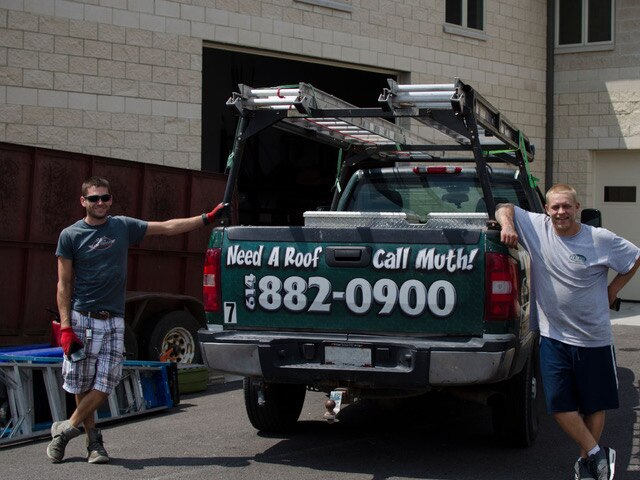When Chad Muth founded Muth & Company Roofing 30 years ago, he had no way of knowing that a service and maintenance program would be one of the keys to his business success. What he did know was that if he was devoted, honest, and had integrity, he could be successful within the roofing industry—and he was right.
Muth & Company Roofing is a GAF-certified Master Elite roofing contractor* with an extensive residential roofing division based in Westerville, Ohio. During GAF's annual WealthBuilder Conference that brings contractors together for idea sharing and business building, Muth was able to take an idea and turn it into a million-dollar-plus revenue stream.
Maintenance Plans Lead to Additional Work
In a recent Real Talk episode, Muth shared the story of his success. He explained that while attending WealthBuilder, he spent time talking to commercial roofing contractors about how their maintenance programs lead to repeat business each year and eventually reroofs. A contractor from Oregon shared that he provided a maintenance program for wood shake roofs that included algae removal and inspections each year.
After speaking with these other contractors, Muth decided that his customers and community could benefit from a maintenance program as well. "There were so many issues that our repair department found that could have been prevented," says Muth.
Muth says it's an easy sell when you arrive to repair a leak and educate the homeowner that with a regular maintenance plan, this leak most likely could have been prevented.
An "Oil Change" for Your Roof
Muth and his team at Muth & Company Roofing like to refer to this maintenance as an "oil change" for your roof.
"We pound all the loose nails, we caulk and seal all the flashing details, we paint everything, and then we give a detailed report," he says.
They also clean the gutters and do an attic inspection, making sure baffles and intakes are correct and that bathroom fans are vented outside, not in the attic. Muth also says that he's seeing the roof life being extended anywhere from three to seven years for homeowners who take advantage of the maintenance program, which his company calls an extended service plan (ESP).
One of Muth & Company Roofing's ESP customers had been in the program for about five years when they began to experience some deterioration that indicated it was time to get a new roof. After showing the owner photos of the issues and providing an estimate for a new roof, they signed without hesitation.
"A five-year care and maintenance plan, which developed the relationship, turned into a just shy of $15,000 roof five years later," shares Muth. "What we've found is a way to keep in contact with the customer, reach out to them every single year, extend the life of their roof, and catch problems before they have them. It's just been absolutely amazing for us."
Service after the Sale
Muth has found success in selling his ESP plan to his new roof customers as well. While 99% of the roofs he installs come with a GAF Golden Pledge Warranty, the roof is still subject to the elements and can benefit from inspections and maintenance. Muth adds an addendum at the bottom of the contract that allows the homeowner the option to purchase a five-year ESP for $875, which starts during the second year of the roof's lifespan and is paid for at the time of the roof purchase. He likens it to regular vehicle maintenance when purchasing a new car.
Being in the neighborhood has been good for word-of-mouth referrals as well. Muth says that neighbors will see their trucks and their crew and ask the homeowner why the roofing company was there—especially since the roof was recently replaced. They tell them about the program, leading to more potential inquiries.
Training Opportunities
Muth said that the program has added benefits for his company, especially when it comes to training new hires.
"We put a lot of new guys with some of our seniors to go out and do the maintenance, because one of the best ways to teach a guy to roof is to show him the problems," says Muth.
Adding the maintenance program has been one of the best boosters for Muth's business. "We get training out of it, we get repeat customers out of it, we get to build our reputation," he says. "It's been amazing, because it's allowed our company to grow in every single aspect."
If you're inspired by Muth & Company Roofing's story and ready to find ways to grow your business, be sure to take advantage of the resources that GAF has to offer at gaf.com/getthere. You'll get access to exclusive tools and benefits that can help your roofing company grow and succeed.
*Contractors enrolled in GAF certification programs are not employees or agents of GAF, and GAF does not control or otherwise supervise these independent businesses. Contractors may receive benefits, such as loyalty rewards points and discounts on marketing tools from GAF for participating in the program and offering GAF enhanced warranties, which require the use of a minimum amount of GAF products.

